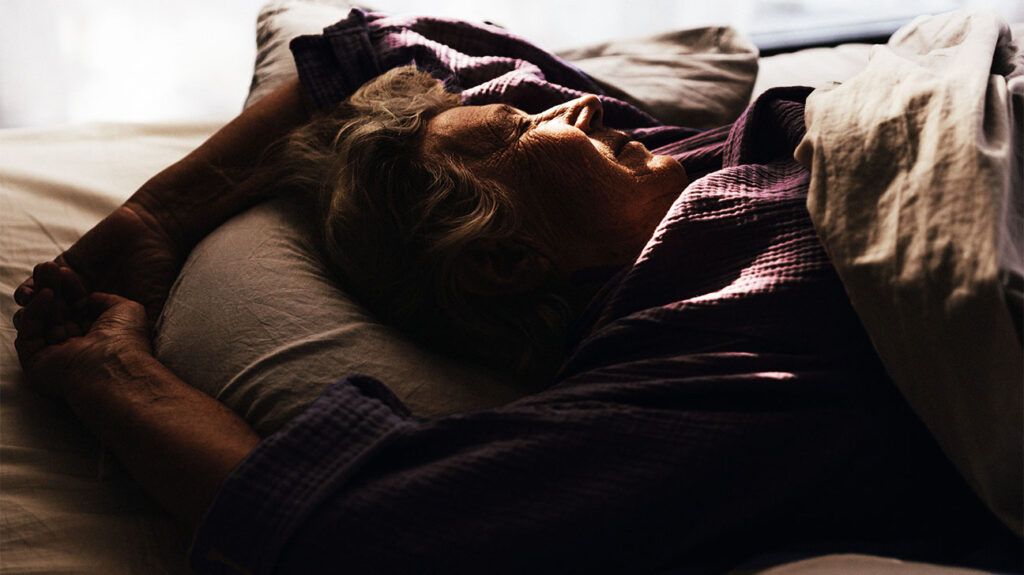An ideal sleeping position for someone with peripheral artery disease (PAD) is a comfortable one, although people who also have sleep apnea will have different needs.
PAD is a condition in which the arteries that carry blood away from the heart narrow. This reduces blood flow in the limbs and typically affects the legs and feet.
One of the most common symptoms of PAD is leg pain, so people with the condition will want to find a sleeping position that allows them to be comfortable and get rest.

More research is necessary to understand whether sleeping position can affect PAD. However, as PAD restricts blood circulating to the limbs, the best sleeping position may be one that encourages blood flow to the legs and arms.
PAD
An
This position allows gravity to help blood run down to the legs without affecting the time it takes to return via the veins. Sleeping on the back also does not affect blood flow to the upper limbs, which PAD can sometimes restrict.
Elevating the legs when sleeping
If a person has both PAD and sleep apnea, however, they
Sleep apnea is a condition where breathing stops and starts during sleep. Sleeping on the side can help keep the airways open.
However, it is worth noting there is a lack of research into sleeping positions specifically for PAD. More studies are necessary for researchers to establish an ideal sleeping position for PAD.
The
In these people with severe cases, the pain and discomfort of critical limb ischemia may disrupt sleep.
Research suggests an association between PAD and sleep apnea. For example, a 2020 study of 141 people with PAD found
At present,
Learn more about sleep apnea types.
The aim of managing PAD is
The following steps may help people manage PAD.
- exercising regularly
- eating a heart-healthy diet
- avoiding or quitting smoking
- maintaining a moderate weight
- managing or relieving stress
Doctors may also prescribe certain PAD medications, including:
In people with severe cases, doctors may recommend surgery to improve blood flow. This could involve angioplasty, which widens or unblocks narrowed arteries, or bypass surgery to create a new path around a blocked artery.
People with PAD affecting the legs are also
Getting enough sleep is
The following steps can help people get good sleep.
- maintaining a sleep schedule, for example, waking up and going to bed at consistent times
- avoiding large meals or alcohol before going to bed
- limiting caffeine consumption hours leading up to bedtime
- avoiding the use of electronic devices before bed
People can also take steps to ensure their bedroom is a place that encourages good sleep. This involves keeping it cool, dark, and free from electronic devices that give off light or noise.
Learn more about ways to sleep better.
People should speak with a doctor if they think they might have symptoms of PAD or if they think their symptoms are getting worse. This includes leg pain that does not go away after a few minutes of rest or any foot problems.
Those with PAD should be in regular contact with a doctor, so the doctor can monitor how they are managing the condition.
If PAD begins affecting sleep, people can speak with a doctor about treatment options and other ways they may be able to improve their sleep.
Should someone elevate their legs if they have PAD or peripheral vascular disease (PVD)?
People
Is heat good for peripheral artery disease?
Although research is currently limited,
Are compression socks good for peripheral artery disease?
Some research suggests compression socks are safe and could be useful for people with PAD who have swelling due to a buildup of fluid in their legs.
The best sleeping position for peripheral artery disease (PAD) may be lying on the back with the upper body slightly elevated. However, there is currently a lack of definitive research to support this.
People who have PAD and sleep apnea may benefit from sleeping on their side instead, as this will help keep their airways open.
Regular exercise can help people improve both their sleep and PAD symptoms. If someone continues to experience leg pain while at rest, they should speak with a doctor.
